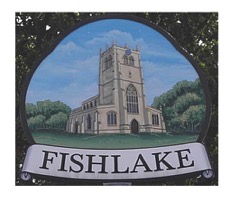Dovecotes in Fishlake.
https://fishlakeheritage.wordpress.com/2025/03/04/dovecotes-in-fishlake/
Use the link for illustrated article.
To begin with my gratitude and thanks to Brian Elliott for his article entitled A Field Guide to Dovecotes of the Doncaster Area. Published in Aspects of Doncaster Discovering Local History. Ed Brian Elliott 1997. This is an excellent article and a good place to start understanding dovecotes in the Doncaster area.
Some of the information below has been gathered from his work.
Dovecotes were once an extremely common landscape feature of medieval times, found in the grounds of monasteries, manor houses, rectories and by the eighteen century on many farms.
So from medieval times to the eighteen century doves and pigeons were a valuable source of fresh meat and eggs but there were strict legal limitations on dovecote ownership.
Legal restrictions on dovecote rights were changed in the Act of 1762/62 whereby any freeholder was allowed to build a pigeon house on his own land and tenants were allowed to erect dovecotes with permission of the landowner.
Dove and pigeon accommodation was many and varied. Owners found space by combining them with granaries, stables, pigsties and poultry houses. Second and even third storey towers over adjacent buildings. The simplest and cheapest way of housing a small number of birds was in garrets of barns or roof space of houses.
Below are some known Fishlake Dovecotes, there may have been more yet to be identified. If any one reading this is aware of others please let the author know.
Fishlake Hall.
In 1692 on the death of Thomas Perkins his household inventory does not mention a dovecote. However by 1700 The Hall was occupied by Francis Simpson and his family. A dovecote is clearly illustrated by Samuel Buck in his sketch of c 1722, ‘The South West Prospect of Fishlake Village’, note the doves flying about above the cote. Also Francis Simpson’s Will records the existence of a dovecote, so it would seen quite reasonable to suppose that he had the cote built about 1700. It appears to be situated opposite the Hall on the Landing.
On 22 nd March 1803 a sale notice records the existence of an ‘excellent Dove Cote’. It’s must have been demolished some time during the 19 th century. There is no trace of it today.
A detail of the Buck sketch showing the dovecote.
Thorninghirst Farm. John Waite has shared the following information. The pigeon cote was 3 storey and the loft was in the gable roof. All floors reached by a ladder.
1949 picture. All the buildings were demolished in 1977.
Park House Farm, probably early 19 th century in date with 250 nest boxes, in the best preserved (in 1997). Brian Elliott.
Thanks to Google Earth present day.
Another small brick cote on West side of Trundle Lane, recorded by Brian Elliott in 1997.
(Could this be West Lea Farm opp Willow Cottages?)
Off the East side of a Trundle Lane is Orchard Lea. This brick cote had a large lunette window for bird access, a feature also in several neighbouring examples, as reported by Brian Elliott.
1975 taken by the author. This build still survives but has been heavy modernised.
Is this another Cote?
A barn on Wenchhirst Lane N. SE653149. Spring 1976 taken by the author. It has been demolished since this picture was taken.
Changes in farming practices and dietary habits among the population led to the decline in demand for pigeon meat. Consequently the use and need for purpose built dove and pigeon housing was no longer required.
